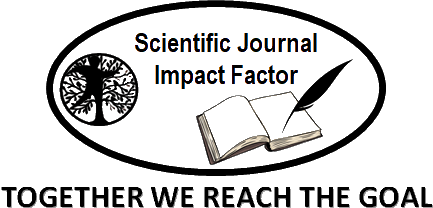Interpretation of Mappadendang Music in the Rice Harvesting Tradition of the Bugis Tribe of South Sulawesi: Roland Barthes' Semiotic Analysis
Abstract
The Mappadendang tradition, a rice harvest ceremony typical of the Bugis Wajo community in South Sulawesi, has a meaning rich in social, cultural, and religious values. This article aims to explore the symbolic interpretation and cultural values contained in Mappadendang music and performances through a semiotic approach. By identifying the denotative and connotative meanings of this music, this article explores how music functions as a symbol in the context of culture, beliefs, and the relationship of the Bugis community with nature, as well as identifying efforts to preserve this tradition amidst the flow of modernization. Data were obtained from several sources collected from various literature such as books, articles, and related journals. The results of the study show that Mappadendang is not only an expression of gratitude for the harvest, but also reflects the social structure of the Bugis Wajo community. The music and movements in the Mappadendang performance contain symbols that are full of meaning, reflecting noble values such as mutual cooperation, respect for ancestors, and the relationship between humans and nature. However, the Mappadendang tradition faces serious challenges due to the influence of cultural hybridization and technological developments. The lack of interest from the younger generation and the dominance of popular culture threaten the sustainability of this tradition.
Keywords
Full Text:
PDFReferences
Alhazmi, AH (2023). Analysis of Performing Arts Governance in Taman Budaya Yogyakarta. Journal of Arts Governance, 9 (1), 26–46. https://doi.org/10.24821/jtks.v9i1.8380
Asra, AA, & Karmila, A. (2017). Representation meaning song Bugis mappadendang through approach hermeneutics. CLLT Journal.
Ayuni, AM, Setiadi, D., & Suparman, F. (2024). Mimicry and Resistance Johan's character in the novel There is No Tomorrow Work Mochtar Lubis. Journal Indonesian Language and Literature Learning, 5 (2), 360. https://doi.org/10.59562/indonesia.v5i2.59333
Barthes, R. (1968). Elements of Semiology. Hill and Wang.
Citrawati, AAIA, Oktavianus, O., Anas, MA, Admiral, A., & Syofia, N. (2023). Exploration and Appreciation in the Digital Era: Youtube Platform as a Media for Sharing Dance Arts Students. Voteteknika (Vocational Electronics and Informatics Engineering), 11 (3), 279. https://doi.org/10.24036/voteteknika.v11i3.125198
Furqon , S., & Busro , B. (2020). HOMI K. BHABHA'S POSTCOLONIALISM HYBRIDITY in Salman Rushdie's Novel Midnight's and Children. Wheel Journal of Literary Studies, 9 (1), 73. https://doi.org/10.26499/jentera.v9i1.494
Hajar, I., Tajibu, K., & Fauziah Astrid, A. (2022). Analysis Roland Barthes' Semiotics in Fighting Films Sarong (Interpretation) culture Man Berani) Roland Barthes' semiotic analysis of the film Tarung Sarong (Brave Men's cultural interpretation). Journal of Communication Sciences, 5, 22–29.
Junaedi, D., & Wardani, ND (2023). Digitalization of the Painting Process with Splattering Technique. Journal of Contemporary Indonesian Art, 9 (1), 62–74. https://doi.org/10.24821/jocia.v9i1.7967
Junida, DS (2019). MAPPADENDANG AS A COMMUNAL TRADITION BETWEEN TO WANI TO LOTANG COMMUNITIES AND ISLAMIC PEOPLE. Dialogue, 42 (1), 39–48.
Mujahidah, N., & Maddatuang, M. (2022). Community Participation in Preserving Tradition Mappadendang in Review Geography Culture. LaGeografia, 20 (3), 366. https://doi.org/10.35580/lageografia.v20i3.34533
Nakagawa, S. (2000). Music and the Cosmos: A Introduction Ethnomusicology. Obor Indonesia Foundation.
Nur, A. (2020). MYSTICISM OF MAPPADENDANG TRADITION IN ALLAMUNGENG PATUE VILLAGE, BONE REGENCY. Journal Khitah , 1 (1).
Nur Zaman, Ahmad Firman Ashari, Nirawati Nirawati, & Hertasning Yatim. (2023). Implementation Draft Village Build with Wisdom Local Farmers in the District Pangkajene and the Islands. TRITON JOURNAL, 14 (2), 323–337. https://doi.org/10.47687/jt.v14i2.458
Putra, WE, Kistanto, NH, & Suryadi, M. (2023). Colonial Discourse and Resistance in the Novel Perawan Village by WR Supratman. Voice Betang, 18 (1), 1–19. https://doi.org/10.26499/surbet.v18i1.453
Rakhmat, P., & Fatimah, JM (2016). The Meaning of Non-Verbal Symbolic Messages of the Mappadendang Tradition In Pinrang Regency. Journal KAREBA Communications, 5 (2), 331–348.
Saputra, DN (2022). Digitalization Music Performance with Theme “Melodie Del Mondo Fantastico.” Virtuoso Journal Music Research and Creation, 4 (2), 120–126. https://doi.org/10.26740/vt.v4n2.p120-126
Setiaji, RS (2023). Creating Visual Arts in the Digital Era. Visual Heritage Journal Art and Cultural Creation, 5 (2), 272–280. https://doi.org/10.30998/vh.v5i2.8241
Sevilla, V., & Wahyuningratna, RN (2023). Representation of Hopelessness in BTS's MV Spring Day (Analysis Semiotics Roland Barthes). IKRAITH-HUMANIORA Journal, 7 (1), 51–59. https://journals.upi-yai.ac.id/index.php/ikraith-humaniora/issue/archive
Sriwahyuni. (2013). MAPPADENDANG: MUSIC FOR THE BUGIS TOLOTANG COMMUNITY'S HARVEST FEAST CEREMONY. Promusika, 1 (1), 50–60.
Syahrian, A. (2024). MAPPADENDANG: Meaning Ceremony Harvest of the Bugis Tolotang Community. Journal of Music Science, 7 (1), 2024–2622. https://jurnal.isi-dps.ac.id/index.php/jomsti/
Takari, M., & Dja'far, FM (2014). Ronggeng and the Twelve Serampang in Studies in the Arts Sciences. USU Press.
Wahid, M. (2015). Theory Interpretation of Paul Ricoeur. LKIS Yogyakarta.
DOI: http://dx.doi.org/10.18415/ijmmu.v12i4.6769
Refbacks
- There are currently no refbacks.
Copyright (c) 2025 International Journal of Multicultural and Multireligious Understanding

This work is licensed under a Creative Commons Attribution-NonCommercial-NoDerivatives 4.0 International License.
https://ijmmu.com
editor@ijmmu.com
facebook.com/ijmmu
Copyright © 2014-2018 IJMMU. All rights reserved.



































